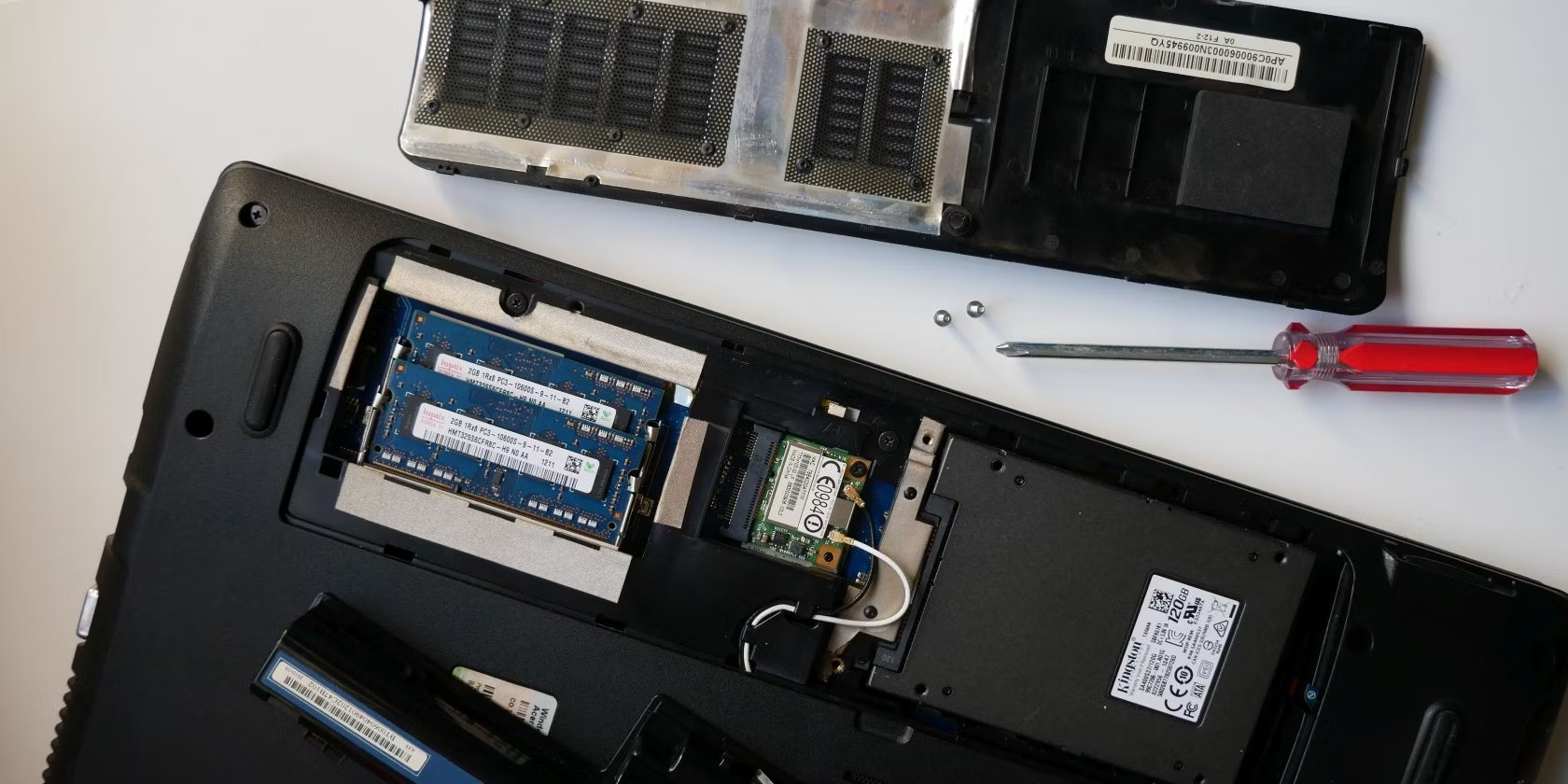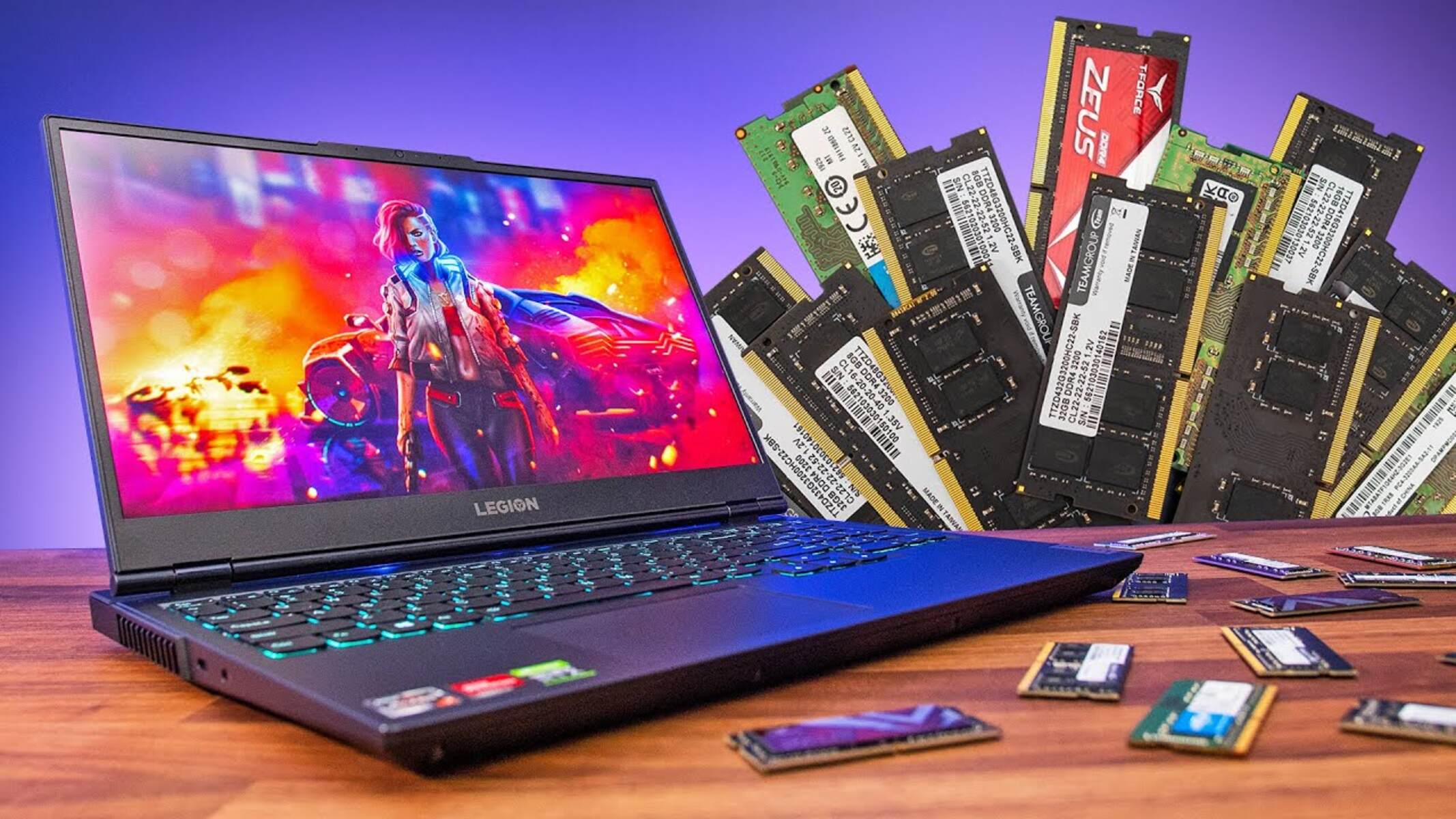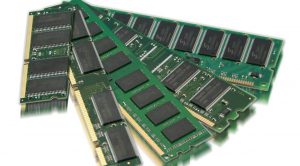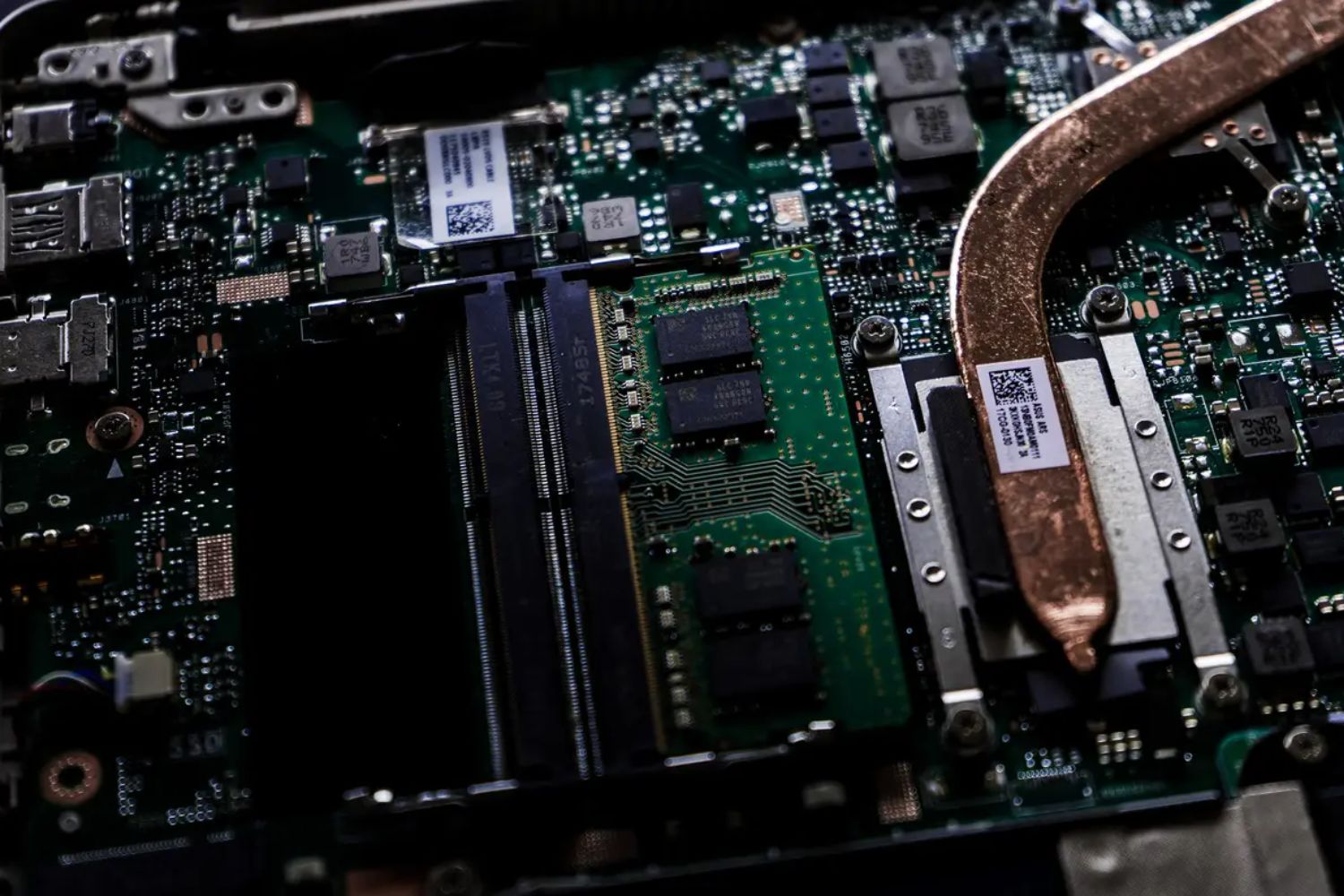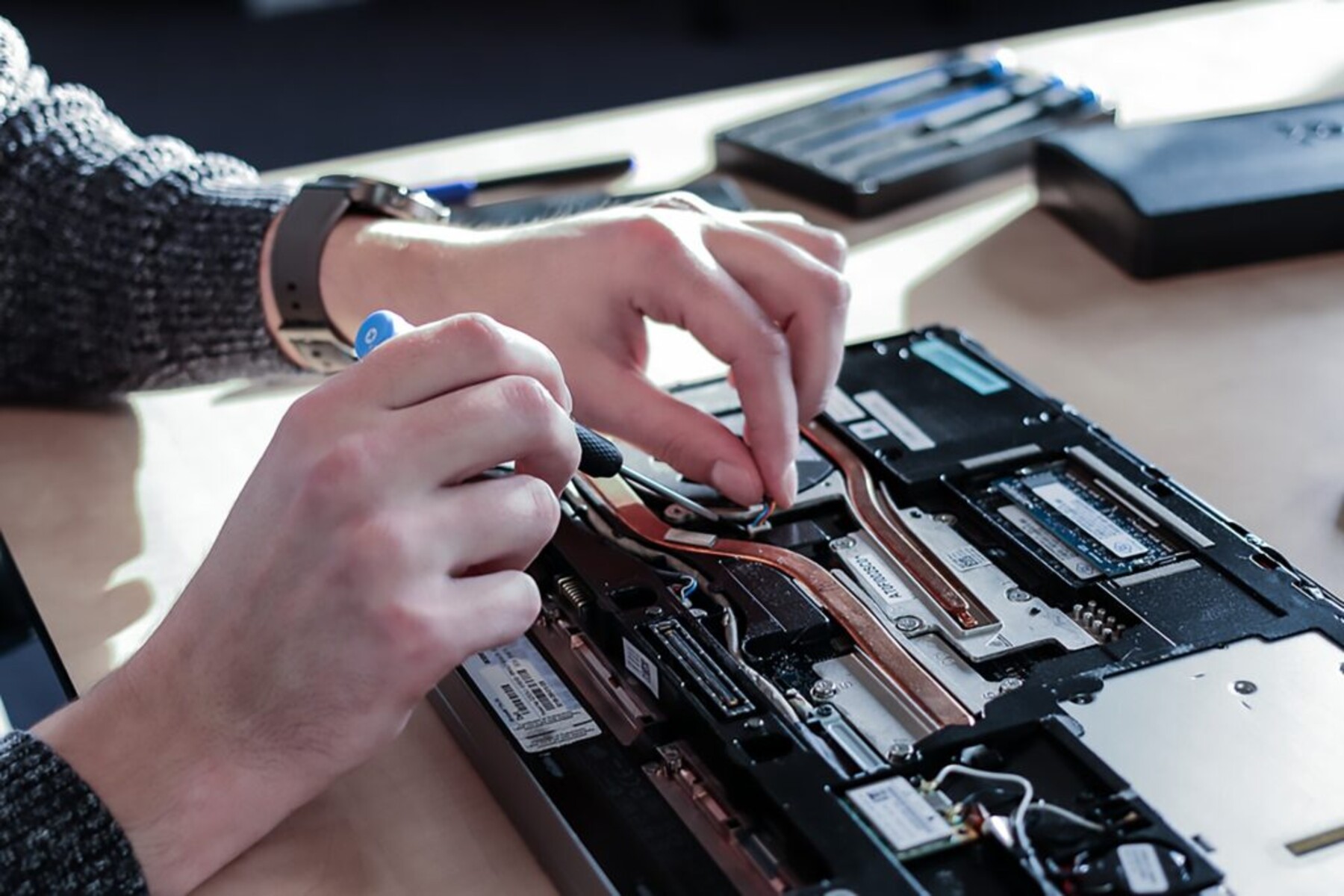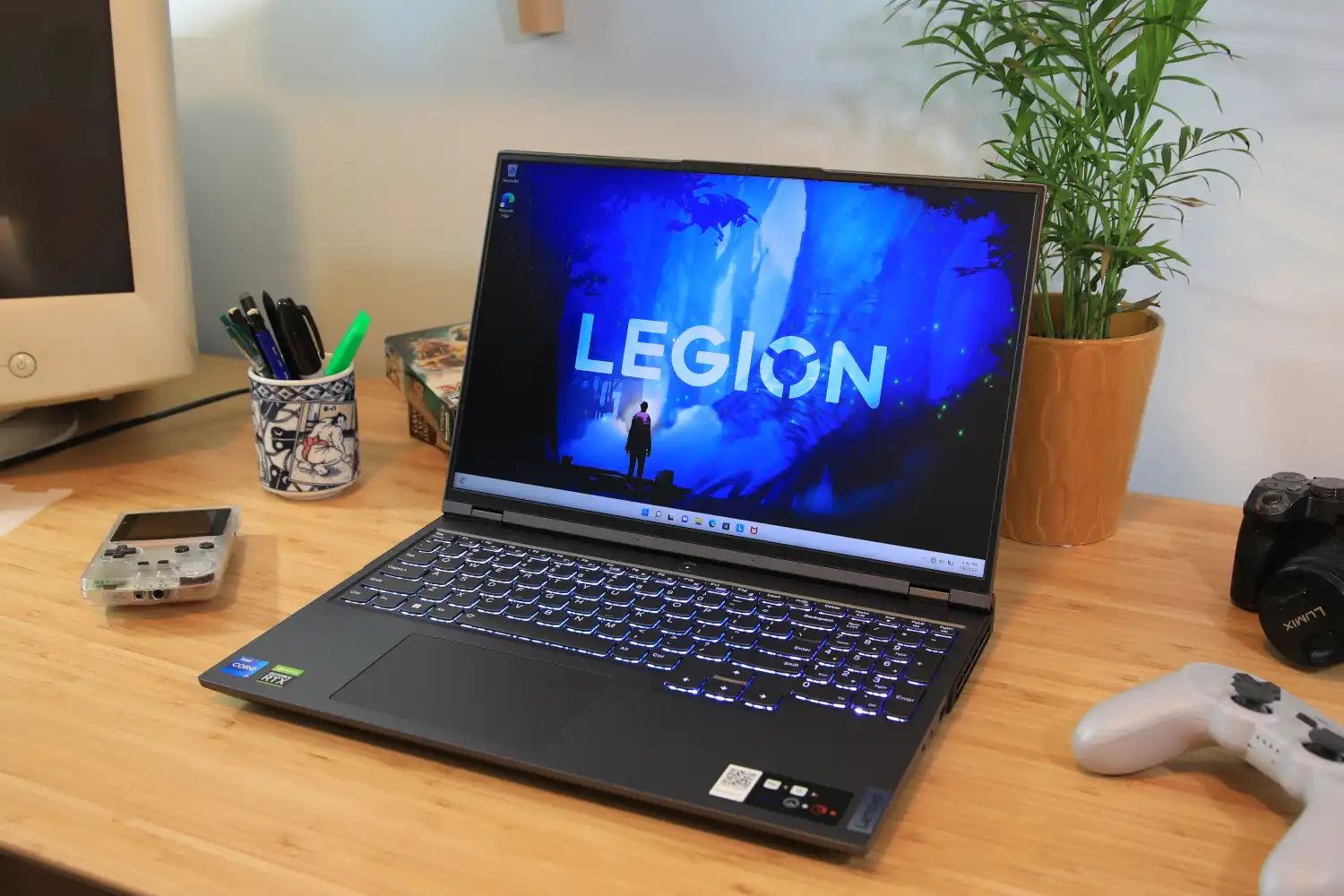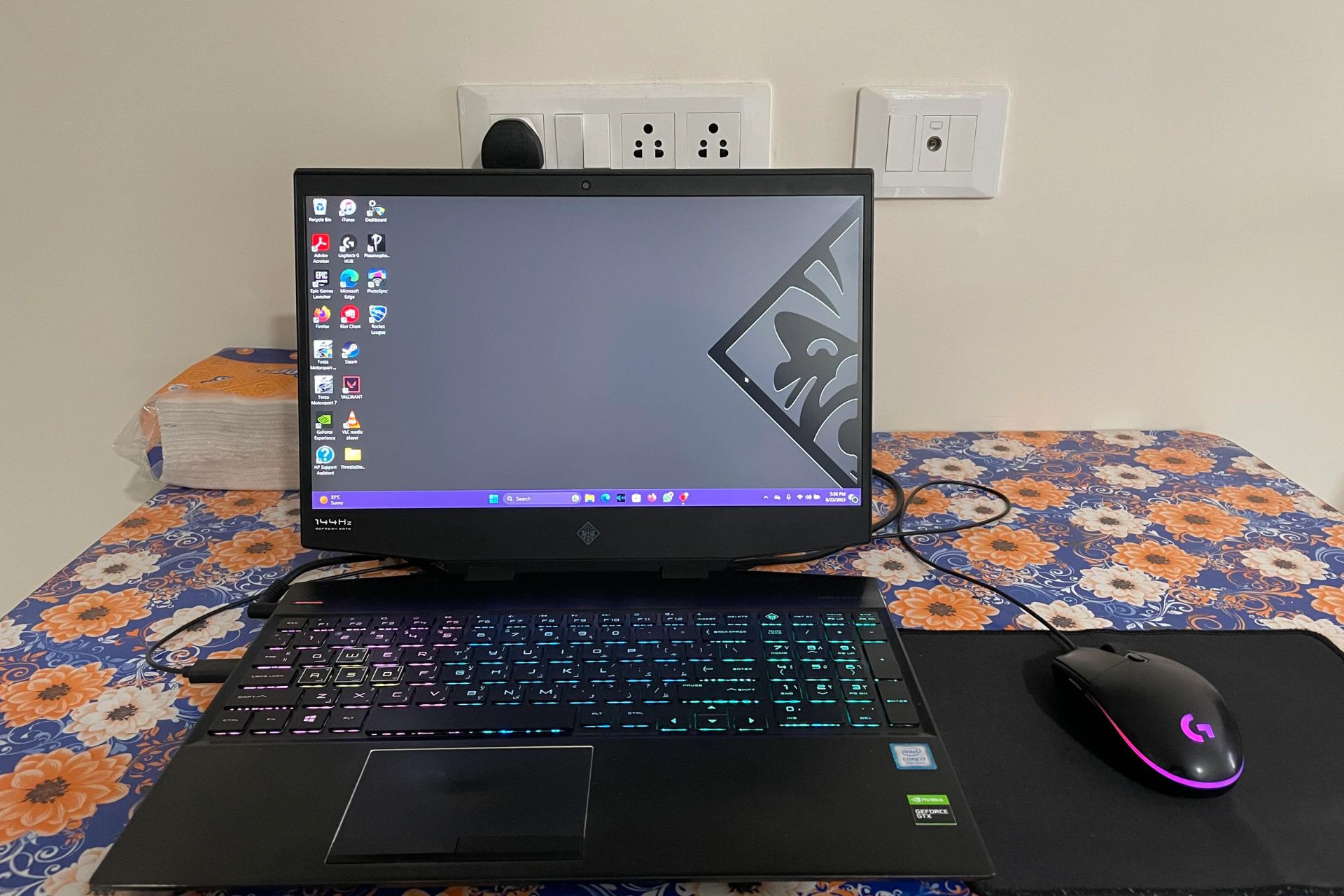Introduction
Welcome to the world of laptop specifications! One key component that plays a crucial role in a laptop’s performance is Random Access Memory, commonly known as RAM. If you’re in the market for a new laptop or simply curious about the importance of RAM, you’ve come to the right place.
RAM is the short-term memory of your computer, and it is responsible for storing and accessing data that the processor needs to perform tasks. In simpler terms, it affects the speed and responsiveness of your laptop. When you open programs, browse the web, or perform any task, RAM is utilized to store the relevant data.
It’s essential to understand the significance of having the right amount of RAM for your needs. Insufficient RAM can result in sluggish performance, slow application loading times, and even crashing programs. On the other hand, having too much RAM might be unnecessary and could lead to wasted resources and higher costs.
In this article, we will walk you through various factors to consider when determining the ideal amount of RAM for your laptop. We’ll explore the different requirements for basic, intermediate, and advanced tasks, as well as gaming and multitasking needs. Additionally, we’ll provide RAM recommendations based on different operating systems.
Before we delve into the specific requirements, it’s essential to understand the technical specifications and terminologies associated with RAM. This knowledge will help you make an informed decision when choosing a laptop.
So, whether you’re a casual user, a professional, or an avid gamer, join us on this RAM-filled journey as we demystify the world of laptop memory and help you determine just how much RAM your laptop needs. Let’s get started!
Why is RAM important?
Random Access Memory (RAM) is a vital component that significantly impacts the overall performance and speed of your laptop. It serves as a temporary workspace for data that your laptop needs to access and process quickly. Here are several reasons why RAM is essential:
1. Speed and Responsiveness: Having an adequate amount of RAM is crucial for ensuring a smooth and responsive user experience. When you open applications or perform tasks, the data needed is stored in RAM for quick access by the processor. Insufficient RAM can cause frustratingly slow loading times and make your laptop feel sluggish.
2. Multitasking: RAM plays a critical role in multitasking. If you frequently work with multiple applications or browser tabs open simultaneously, you’ll need enough RAM to handle the increased workload. Insufficient RAM can result in lagging, freezing, and even crashes when trying to juggle multiple tasks.
3. Application Performance: Many applications, especially resource-intensive ones like video editing software or graphical design tools, require a significant amount of RAM to run smoothly. Insufficient RAM can lead to slow response times when working on complex projects or rendering videos.
4. Gaming Performance: Gamers often demand high-performance machines with sufficient RAM. Many modern games require a considerable amount of RAM to ensure smooth gameplay and prevent stuttering or frame rate drops. Insufficient RAM can lead to frustrating lag and negatively impact your gaming experience.
5. Future-Proofing: Investing in sufficient RAM is essential for future-proofing your laptop. As technology advances and software becomes more demanding, the amount of RAM required for optimal performance also increases. Having enough RAM ensures that your laptop can handle upcoming updates and software releases without experiencing significant performance issues.
6. Overall System Stability: Insufficient RAM can result in system instability, crashes, and even the notorious “blue screen of death.” By having enough RAM, you minimize the risk of encountering these issues and provide a stable computing environment.
Understanding the importance of RAM is crucial when deciding on the appropriate amount for your laptop. In the following sections, we will explore different tasks and their corresponding RAM requirements to help you determine the ideal amount of RAM needed for your specific needs.
Factors to consider for RAM requirements
When determining the appropriate amount of RAM for your laptop, several factors need to be taken into consideration. These factors can help you determine how much RAM you’ll need to ensure optimal performance for your specific use case. Here are the key factors to consider:
1. Usage Patterns: The nature of your usage plays a vital role in determining RAM requirements. Consider whether you use your laptop for basic tasks like web browsing, word processing, and email, or if you engage in more resource-intensive activities like video editing, 3D modeling, or gaming. Resource-intensive tasks typically require more RAM to ensure smooth and efficient performance.
2. Software Requirements: Different software applications have varying RAM requirements. If you frequently use memory-hungry software like virtual machines, CAD software, or professional editing suites, you’ll need a laptop with a higher amount of RAM to handle these applications effectively.
3. Future-Proofing: It’s essential to consider how long you intend to use your laptop without upgrading or replacing it. Investing in more RAM than you currently need can help future-proof your device, as software requirements tend to increase over time. It’s better to have more RAM and not need it immediately than to run into performance issues down the line.
4. Budgetary Constraints: RAM is only one component of a laptop, and it’s important to consider your overall budget. Higher amounts of RAM typically come at a higher cost, so it’s crucial to strike a balance between your requirements and affordability. Assess your needs and allocate your budget accordingly to get the best value for your money.
5. Operating System: Different operating systems have varying RAM requirements. Windows, macOS, and Linux distributions have different memory management techniques and minimum RAM recommendations. It’s important to consider the specific requirements and recommendations for your chosen operating system to ensure optimal performance.
6. Upgradeability: Some laptops allow you to upgrade the RAM in the future, while others have fixed memory configurations. If you have a laptop with upgradeable RAM, you can opt for a lower amount initially and upgrade later if needed. However, if your laptop has soldered RAM, it’s crucial to choose the right amount from the beginning, as it cannot be upgraded.
By considering these factors, you can make an informed decision about how much RAM you’ll need for your laptop. In the following sections, we will outline specific RAM recommendations based on different usage scenarios and tasks to further guide you in finding the optimal amount of RAM for your needs.
Basic tasks and RAM requirements
If your laptop usage primarily revolves around basic tasks such as web browsing, word processing, email, and streaming media, you won’t require a significant amount of RAM. For smooth performance in these tasks, a minimum of 4GB of RAM should be sufficient.
A 4GB RAM configuration allows your laptop to handle basic applications and web browsers without experiencing noticeable slowdowns. It provides enough memory to keep multiple tabs and basic applications running simultaneously, ensuring smooth navigation and responsiveness.
With 4GB of RAM, you can comfortably browse the web, work with office documents, stream videos, and engage in light multitasking. You’ll typically experience faster and more efficient performance compared to laptops with lower amounts of RAM.
However, it’s worth noting that if you frequently use memory-consuming tasks like running multiple instances of resource-hungry applications or opening large files, you may experience slowdowns with just 4GB of RAM. In such cases, upgrading to 8GB or higher may improve your laptop’s performance.
For those who occasionally work with more demanding applications, such as photo editing software or light video editing, considering a laptop with 8GB of RAM is recommended. This will provide you with more headroom to handle these applications comfortably without sacrificing performance.
Keep in mind that the RAM requirements for basic tasks may vary depending on the operating system and the specific applications you use. Additionally, if you plan to use your laptop for several years without upgrading, it’s advisable to future-proof your device by opting for a higher amount of RAM, such as 8GB or 16GB.
In summary, for basic tasks like web browsing, word processing, email, and media streaming, a minimum of 4GB of RAM is suitable. Upgrading to 8GB or more may be beneficial for occasional use of memory-intensive applications or if you want to future-proof your laptop.
Intermediate tasks and RAM requirements
If you frequently engage in intermediate tasks that require a bit more processing power, such as photo and video editing, running virtual machines, or using demanding software applications, you’ll benefit from having a higher amount of RAM. For these types of tasks, a minimum of 8GB of RAM is recommended.
With 8GB of RAM, your laptop can efficiently handle the increased workload of memory-intensive applications. This allows for smoother and more fluid performance when working on complex projects or editing high-resolution images and videos.
Running virtual machines, which require resources to create virtual environments for different operating systems, can also benefit from 8GB of RAM. Having enough memory ensures that your virtual machines run smoothly without compromising the performance of your host operating system.
Additionally, if you frequently use software applications that rely heavily on RAM, such as CAD software, graphic design tools, or audio/video editing software, upgrading to 16GB or higher may be beneficial. This higher amount of RAM allows for smoother editing and rendering processes, reducing lag and ensuring a more efficient workflow.
Advanced multitasking is another factor to consider when determining RAM requirements for intermediate tasks. If you frequently work with a combination of memory-consuming applications, multiple browser tabs, and resource-intensive programs, having more RAM will prevent sluggishness and improve overall system responsiveness.
Furthermore, if you plan to use your laptop for several years or aim to future-proof your device, opting for 16GB or higher will provide you with additional headroom to handle more demanding applications and ensure smooth performance as software requirements evolve.
In summary, for intermediate tasks such as photo and video editing, running virtual machines, and using demanding software applications, a minimum of 8GB of RAM is recommended. Consider upgrading to 16GB or higher if you frequently engage in memory-intensive tasks or want to future-proof your laptop.
Advanced tasks and RAM requirements
If you’re involved in advanced tasks that require substantial computing power and memory, such as professional video editing, 3D rendering, or running complex simulations, you’ll need a significant amount of RAM to ensure smooth and efficient performance. For these advanced tasks, a minimum of 16GB of RAM is recommended.
With 16GB of RAM, your laptop can handle the resource-intensive demands of advanced tasks without experiencing significant slowdowns or performance bottlenecks. This higher amount of RAM allows for seamless editing, rendering, and processing of large files, resulting in faster and more efficient workflows.
Professional video editing software, 3D modeling and animation software, and other CPU and GPU-intensive applications often require a significant amount of RAM to operate smoothly. By having 16GB or more, you’ll have ample memory to handle the complex calculations, data manipulation, and rendering required by these applications.
In addition to advanced tasks, content creators who work with multiple software applications simultaneously, such as graphic designers or audio engineers, can benefit from having a higher amount of RAM. This enables smooth multitasking and prevents performance degradation when working with memory-intensive programs.
When considering advanced tasks, it’s important to keep in mind that certain applications or workflows may have even higher RAM requirements. If you’re working with extremely large files or complex simulations, you may need 32GB or more of RAM to ensure optimum performance.
It’s also worth noting that advanced tasks often require a powerful processor and a dedicated graphics card for optimal performance. While RAM is crucial, having a balanced combination of RAM, CPU, and GPU is essential to achieve the best results.
In summary, for advanced tasks like professional video editing, 3D rendering, and running complex simulations, a minimum of 16GB of RAM is recommended. Consider upgrading to 32GB or higher if you frequently work with extremely large files or engage in even more demanding workflows.
Gaming and RAM requirements
If you’re a passionate gamer, you know how important it is to have a powerful and responsive gaming laptop. RAM plays a crucial role in ensuring a smooth gaming experience, especially when playing modern and graphically intensive games. For gaming purposes, a minimum of 8GB of RAM is recommended, but 16GB or more is preferable for optimal performance.
With 8GB of RAM, most games will run smoothly without major performance issues. However, as games become more graphically advanced and demanding, having 16GB or higher will provide a noticeable improvement in overall performance. This higher amount of RAM allows for faster loading times, smoother gameplay, and better multitasking capabilities while gaming.
Gaming often involves running multiple applications or processes simultaneously, such as game launchers, chat programs, and streaming software. These additional processes can consume significant amounts of RAM. By having 16GB or more, you’ll have enough memory to handle these multitasking needs without affecting game performance.
Additionally, having ample RAM is beneficial for games that require large amounts of memory for texture loading, level streaming, and other in-game assets. This ensures that the game runs seamlessly without stuttering or experiencing lag spikes during intensive gameplay moments.
It’s worth noting that some high-end gaming laptops now offer configurations with 32GB or even 64GB of RAM. While these higher amounts may not provide significant gaming performance improvements over 16GB in most cases, they can be beneficial for individuals who engage in other memory-intensive tasks alongside gaming, such as streaming, video editing, or running virtual machines.
Lastly, for gamers who plan to future-proof their laptops or explore virtual reality (VR) gaming, considering 16GB or higher is recommended. VR games and experiences often demand additional RAM to ensure smooth and immersive gameplay, making a higher RAM configuration essential.
In summary, for gaming purposes, a minimum of 8GB of RAM is recommended, but 16GB or more is preferable for optimal performance. Consider higher RAM configurations for multitasking, future-proofing, and VR gaming to ensure a smooth and immersive gaming experience.
Multitasking and RAM requirements
In today’s fast-paced digital world, multitasking has become a common practice. Whether you’re a student, professional, or simply a busy individual, the ability to efficiently switch between multiple applications and tasks is essential. RAM plays a vital role in ensuring smooth multitasking capabilities on your laptop.
When it comes to multitasking, the more RAM you have, the better. Having an ample amount of RAM allows your laptop to store and quickly access the data needed for different applications and tasks. This prevents performance bottlenecks and ensures that you can seamlessly switch between programs without experiencing significant slowdowns.
If you frequently find yourself juggling multiple applications simultaneously, such as having multiple web browsers, office applications, or design tools open at the same time, a minimum of 8GB of RAM is recommended. This amount of RAM provides sufficient headroom for smooth multitasking without sacrificing performance.
However, if your multitasking needs involve running memory-intensive applications or having a substantial number of browser tabs open simultaneously, upgrading to 16GB or higher is advisable. This higher amount of RAM allows for even smoother multitasking capabilities and prevents slowdowns or crashes when dealing with memory-hungry tasks.
Furthermore, multitasking often goes hand-in-hand with other activities such as streaming media, running virtual machines, or engaging in video conferencing. These activities can further increase the demand on your laptop’s resources. Having more RAM (16GB or higher) ensures that you can perform multiple tasks simultaneously without sacrificing performance or experiencing noticeable lag.
It’s important to note that the RAM requirements for multitasking may vary depending on the specific applications and tasks you engage in. Some applications, such as video editing software or virtual machines, can consume a significant amount of memory on their own. Therefore, it’s crucial to assess your multitasking needs and consider the requirements of the applications you use regularly.
For users who frequently engage in memory-intensive multitasking scenarios or want to future-proof their laptops, opting for 16GB or higher is recommended. This ensures a smooth and seamless multitasking experience, allowing you to boost your productivity and efficiency without being hindered by memory constraints.
In summary, for efficient multitasking capabilities, a minimum of 8GB of RAM is recommended. Upgrading to 16GB or higher is advisable for memory-intensive multitasking, resource-demanding applications, or individuals who want to future-proof their laptops.
RAM recommendations for different operating systems
The choice of operating system can impact the RAM requirements for your laptop. Different operating systems have varying resource demands, memory management techniques, and minimum RAM recommendations. Here are some RAM recommendations for popular operating systems:
1. Windows: Windows is a widely used operating system that offers a range of versions suited for different user needs. For general usage and basic tasks, a minimum of 4GB of RAM is recommended. However, for a smoother experience, especially when multitasking or running resource-intensive applications, upgrading to 8GB or higher is advisable. Windows may require more RAM if you frequently use memory-hungry applications or prefer to have several applications open simultaneously.
2. macOS: macOS, the operating system developed by Apple, is known for its efficiency and smooth performance. For basic tasks, 4GB of RAM is typically sufficient. However, for a more optimal experience, especially for multitasking, media editing, or running virtual machines, upgrading to 8GB or more is recommended. Keep in mind that macOS is designed to work optimally with Apple’s hardware, so the RAM recommendations may differ slightly from those of other operating systems.
3. Linux: Linux distributions come in various flavors, each with its own resource demands. The beauty of Linux is its ability to run on older hardware with lower RAM configurations. For basic tasks and lightweight Linux distributions, 2GB to 4GB of RAM may be sufficient. However, for more resource-intensive tasks or running complex applications, 8GB or higher is recommended. Linux offers excellent flexibility in terms of customization, allowing users to fine-tune the operating system to their specific needs.
4. Chrome OS: Chrome OS, the lightweight operating system developed by Google, is primarily designed for web-centric usage. Chromebooks, which run on Chrome OS, often come with low RAM configurations. For basic web browsing, email, and document editing, 2GB to 4GB of RAM may be sufficient. However, for a smoother experience, especially when working with multiple browser tabs or using Android apps, upgrading to 8GB or more is recommended.
These recommendations serve as general guidelines, and your specific usage patterns and requirements may differ. It’s essential to consider the specific applications and tasks you use regularly when determining the appropriate amount of RAM for your chosen operating system.
Ultimately, it’s worth noting that having higher amounts of RAM can provide benefits in terms of multitasking, future-proofing, and overall system stability, regardless of the operating system you choose. Therefore, if budget and other factors permit, opting for a higher RAM configuration than the minimum recommendations may be advantageous.
In summary, RAM recommendations vary depending on the operating system. For general usage, a minimum of 4GB of RAM is recommended, but upgrading to 8GB or higher is advisable for smoother performance, multitasking, and resource-intensive tasks. It’s crucial to consider your specific usage patterns and the requirements of the applications you use regularly.
Understanding RAM specifications
When shopping for a laptop or upgrading your RAM, it’s essential to have a basic understanding of RAM specifications. These specifications help you choose the right type and speed of RAM that is compatible with your system and meets your performance needs. Here are some key specifications to consider:
1. Type of RAM: There are different types of RAM available, such as DDR3, DDR4, and the newer DDR5. It’s crucial to check the supported RAM type by your laptop or motherboard. DDR4 is currently the most common and widely supported type, offering improved performance and energy efficiency compared to its predecessor, DDR3.
2. RAM Capacity: RAM capacity refers to the maximum amount of memory that can be installed in your laptop. It’s important to check the maximum supported RAM capacity of your system to ensure that you don’t exceed the limit. Common RAM capacities for laptops range from 4GB to 32GB or higher, depending on the laptop model and specifications.
3. RAM Speed: RAM speed, measured in MHz, determines how quickly data can be accessed and transferred by the RAM module. Higher RAM speeds generally result in improved performance, especially in memory-intensive tasks. However, it’s important to ensure that the RAM speed is compatible with your laptop’s motherboard or chipset. Check the maximum supported RAM speed to ensure optimal performance.
4. Timing (CAS latency): CAS latency, also referred to as timing, measures the delay between the memory controller sending a command and the RAM module responding. Lower CAS latency generally indicates faster responsiveness, but it’s important to note that the impact on overall system performance is relatively minimal compared to RAM capacity and speed.
5. Dual-Channel and Quad-Channel Configurations: Many laptops support dual-channel or quad-channel memory configurations. Dual-channel and quad-channel memory setups improve memory bandwidth and performance by utilizing multiple memory modules simultaneously. If your laptop supports dual-channel or quad-channel memory, it’s advisable to install RAM modules in pairs or sets for optimal performance.
6. ECC vs. Non-ECC: ECC (Error Correcting Code) RAM is designed to detect and correct errors in memory, adding an extra layer of data accuracy and integrity. ECC RAM is commonly used in professional and enterprise systems that require the highest levels of reliability. Non-ECC RAM, on the other hand, is more commonly found in consumer-grade laptops and provides excellent performance at a lower cost.
Understanding these RAM specifications is crucial for making an informed decision when purchasing or upgrading your laptop’s memory. It’s important to research and consult your laptop’s specifications or motherboard documentation to ensure compatibility with the RAM modules you plan to install.
By considering the correct type, capacity, speed, and configuration of the RAM, you can ensure optimal performance and seamless compatibility with your laptop’s hardware, allowing you to make the most of your system’s capabilities.
In summary, understanding RAM specifications, including the type, capacity, speed, timing, and configuration, is crucial when purchasing or upgrading your laptop’s RAM. Consider compatibility with your existing hardware and performance needs to make an informed decision.
Conclusion
Choosing the right amount of RAM for your laptop is crucial for ensuring optimal performance and meeting your specific needs. Consider factors such as the nature of your tasks, software requirements, future-proofing, and your operating system when determining the appropriate RAM configuration.
For basic tasks, such as web browsing and word processing, a minimum of 4GB of RAM is recommended. Upgrading to 8GB or more is advisable for intermediate tasks like photo and video editing, running virtual machines, or using resource-intensive software.
Advanced tasks, such as professional video editing or 3D rendering, require a minimum of 16GB of RAM. Consider higher RAM configurations if you frequently engage in memory-intensive tasks or want to future-proof your laptop.
Gamers should aim for a minimum of 8GB of RAM, but upgrading to 16GB or more is preferable for smooth gaming experiences. Higher RAM configurations are also beneficial for multitasking, future-proofing, and virtual reality gaming.
Operating systems have their own RAM recommendations. Windows typically requires a minimum of 4GB, macOS performs well with 8GB, Linux is flexible but may benefit from 8GB or more, and Chrome OS runs smoothly with 4GB, but 8GB may enhance multitasking capabilities.
Understanding RAM specifications, including type, capacity, speed, and configuration, is essential for choosing compatible and optimal RAM modules for your laptop. Ensure that the RAM you choose aligns with your laptop’s specifications and performance requirements.
By considering your specific needs, multitasking patterns, and the requirements of the tasks and applications you regularly use, you can determine the right amount of RAM for your laptop. This will result in smoother multitasking, faster application loading times, enhanced gaming experiences, and overall improved performance.
Remember, RAM is an investment in your laptop’s performance and usability. It’s better to have more RAM than you currently need, as it provides headroom for future needs and ensures that your laptop can handle upcoming software advancements without experiencing performance limitations.
So, whether you’re a casual user, a creative professional, or a passionate gamer, make an informed decision about the amount of RAM your laptop needs. With the right amount of RAM, you can unlock the full potential of your laptop and enjoy a seamless and powerful computing experience.







